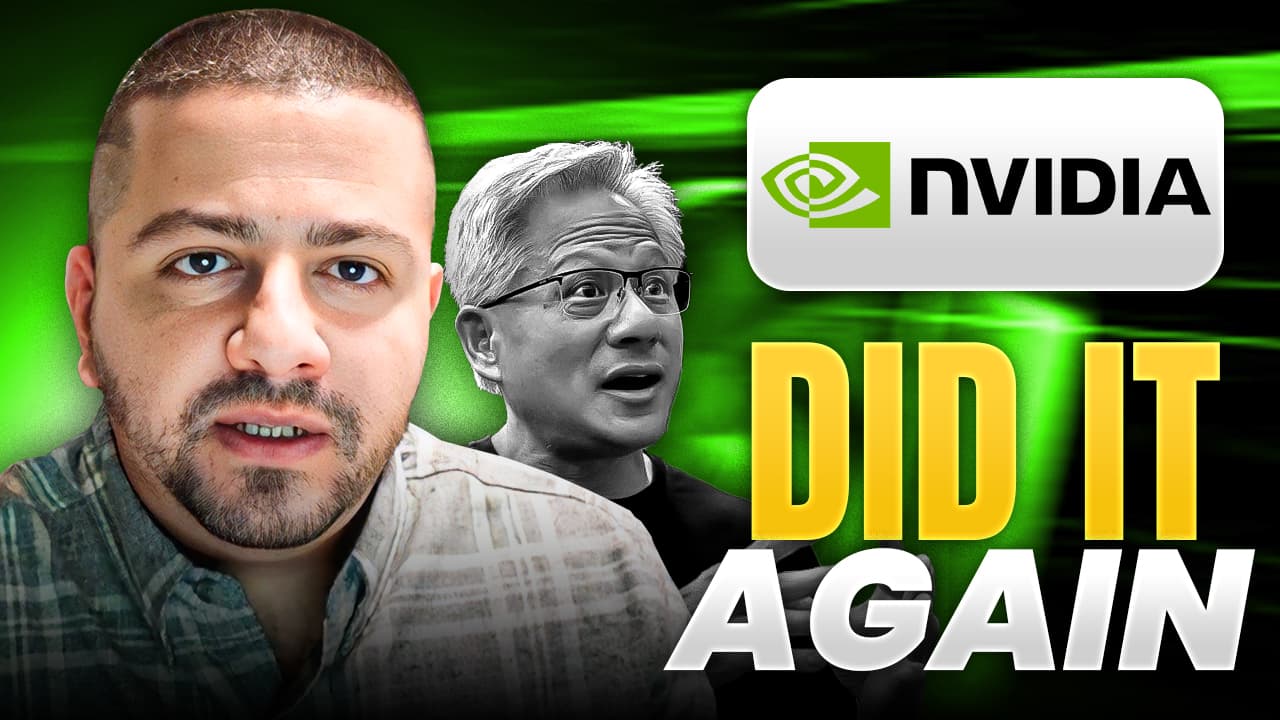Why Is Everyone Excited About Nvidia Stock Again?

News Summary
According to The Motley Fool, Nvidia's stock has once again captured investor attention following October 28, 2025. This resurgence in excitement stems from a series of significant new developments announced by Nvidia CEO Jensen Huang during an investor conference, which sparked market discussions and renewed optimism for the company's shares.\n\nThe article does not detail the nature of these "huge new developments" but emphasizes their impact in reigniting market enthusiasm for the chip giant, indicating positive investor expectations regarding Nvidia's future innovation and growth potential.
Background
Nvidia is a global leader in graphics processing units (GPUs) and a pivotal enabler of artificial intelligence (AI) computing. The company holds leading technology and market share across various sectors, including data centers, professional visualization, gaming, and autonomous vehicles. Its GPU products are foundational for AI training and inference due to their exceptional parallel computing capabilities, placing Nvidia in a critical position amidst the current AI-driven technological wave.\n\nMarket attention on Nvidia is consistently high, with its stock price heavily influenced by product launches, technological breakthroughs, and market demand expectations. As one of the bellwethers of the tech industry, Nvidia's movements are often seen as an indicator of the overall health of the semiconductor and AI industries.
In-Depth AI Insights
What could be the true drivers behind these "huge new developments," and what do they imply for Nvidia's long-term strategy?\n\nThese vaguely described "huge new developments" likely point to strategic breakthroughs by Nvidia in one or more of the following areas:\n- Next-generation AI chip architectures: Launching more powerful and energy-efficient AI accelerators to further solidify its monopolistic position in the data center and AI training markets, especially amid increasing competition.\n- Software ecosystem expansion: Beyond just hardware, there might be new CUDA versions, AI development tools, or platform announcements aimed at deepening ties with the developer community and reinforcing the moat around its integrated hardware-software solutions.\n- Penetration into emerging market segments: This could involve key products or collaborations in robotics, industrial AI, edge computing, or broader metaverse infrastructure, signaling new growth curves.\nThese initiatives are designed to ensure Nvidia remains a core AI infrastructure provider for the next decade, countering potential threats from AMD, Intel, and in-house chip development by major cloud service providers.\n\nWhy is market excitement for Nvidia "again" resurfacing in 2025? What investment sentiment and market cycle does this reflect?\n\nThe term "again excited" suggests the market might have gone through a period of questioning Nvidia's growth prospects or a valuation correction. This reflects:\n- Accelerated AI application deployment: By 2025, AI technology likely achieved commercial breakthroughs in more industries, creating sustained and robust demand for high-performance computing, assuaging previous concerns about an AI bubble or slowing demand.\n- Improved macroeconomic outlook: Under the Trump administration's policies, if the global economy, especially the US economy, shows stronger growth resilience or easing inflationary pressures, it could stimulate an overall tech stock valuation rebound, with Nvidia benefiting as a leader.\n- Rebalancing competitive landscape: Competitors' (e.g., AMD, Intel) progress might not have met expectations, or Nvidia has once again widened its technological lead through innovation, re-establishing its technical superiority and prompting investors to regain confidence.\nThis cyclical excitement indicates that despite Nvidia's strong position, the market periodically scrutinizes the justification for its high valuation and seeks new catalysts.\n\nBeyond the superficial "huge developments," what potential risks or unmentioned challenges should investors be aware of?\n\nDespite positive news, investors should remain vigilant and consider the following potential risks:\n- Escalating geopolitical tensions: Technology export controls or supply chain restrictions between the US and key rivals could have long-term and unpredictable impacts on Nvidia's global operations, especially sales in critical markets like China. This is particularly relevant during a second Trump administration.\n- Risk of an "AI bubble" burst: Even with AI application deployment, if the overall valuation of the AI industry is excessively high, or if certain applications fail to deliver expected returns, it could trigger a broad correction in the AI sector, from which Nvidia, as a leader, would not be immune.\n- Energy consumption and cost pressures: As AI model scales grow exponentially, the immense energy consumption and associated operational costs for training and running models will pose significant challenges for future data centers, potentially affecting customer deployment willingness and Nvidia's profit margins.\nThese deeper challenges may be obscured by short-term positive news but represent substantial tests for Nvidia's long-term sustainable growth.